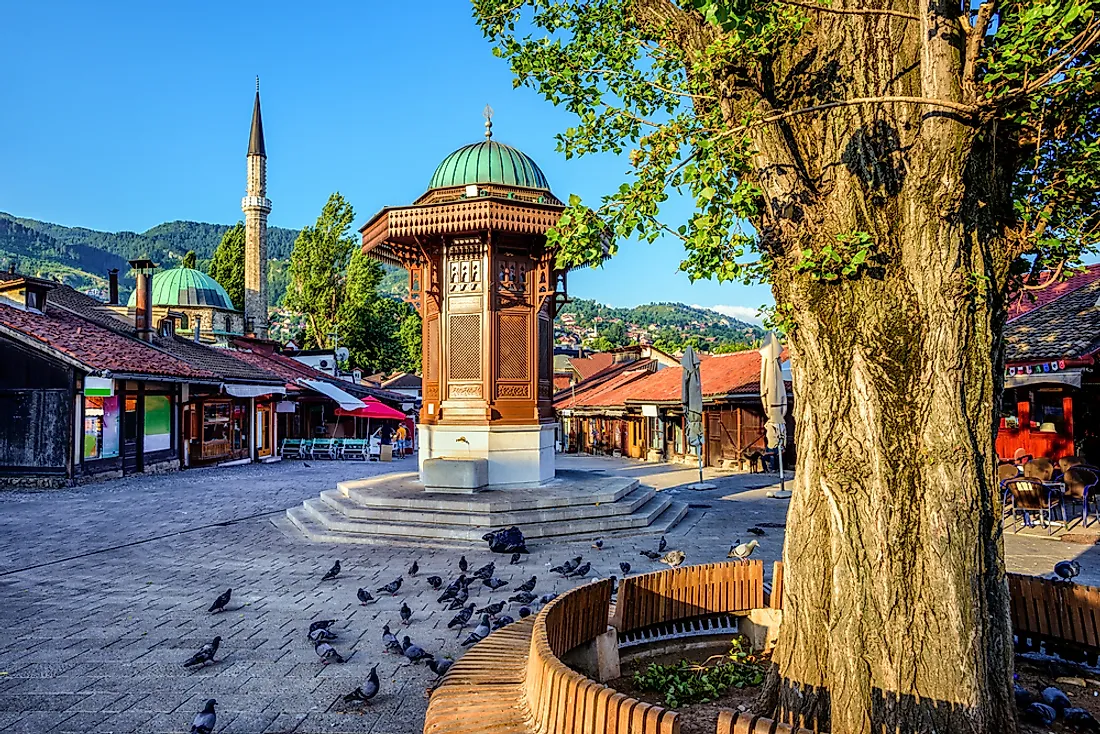What Is The Capital Of Bosnia And Herzegovina?

Bosnia And Herzegovina is a country located in the Balkan Peninsula of Southeastern Europe. The country occupies a total area of 51,129 square km and has a population of approximatrely 3,531,159 individuals. Bosnia And Herzegovina is bordered by Montenegro and Serbia southeast and east, respectively, and is nearly landlocked by Croatia to the north, south, and west.
What Type of Government Does the Country Have?
Bosnia and Herzegovina is governed as a parliamentary representative democracy. The Presidency, which acts as the head of state, is made up of three members: one member from Croatia, one member from Bosnia, and one member from Serbia. The executive branch of government also includes a Prime Minister, who is nominated by the President and appoints a Council of Ministers. The legislative branch consists of a Parliamentary Assembly made up of the House of Peoples and the National House of Representatives. The judiciary operates independently of the executive and legislative branches, and the Constitutional Court of Bosnia and Herzegovina is the country's highest court.
What Is the Capital of Bosnia and Herzegovina?
Sarajevo is Bosnia and Herzegovina’s capital city. It occupies an area of 141.5 square km, has a population of approximately 275,524, and a population density of 1,900 persons per square km. Sarajevo's metropolitan area has an area of 3,350 square km and a population of 555,210.
Where Is Sarajevo Located?
Sarajevo is located at roughly the geographic center of Bosnia and Herzegovina, and is situated at an elevation of 1,699 feet above sea level in the Sarajevo valley. The city is surrounded by the mountains of the Dinaric Alps and densely forested hills. The landscape of Sarajevo features the Miljacka river and hilly terrain.
History of Sarajevo
Sarajevo has a long and rich religious and cultural history, and has therefore been referred to as the "Jerusalem of Europe." Human settlement in the area dates back to prehistoric times, but the modern city traces its roots to the 15th century as part of the Empire. After World War II, Sarajevo became the capital of the Socialist Republic of Bosnia and Herzegovina, which was a part of the Socialist Federal Republic of Yugoslavia. During its role as the capital of the republic, the city experienced rapid development and modernization, and hosted the Winter Olympic Games in 1984. However, in the following decade, the Yugoslav Wars involved a series of military conflicts, including the Bosnian War and the Siege of Sarajevo, which is considered to be the longest siege of any capital city in the world. After the collapse of Yugoslavia and the emergence of an independent Bosnia and Herzegovina, Sarajevo became the capital of the country. The city is currently the nation’s most rapidly growing city.
Role of Sarajevo As the Capital of Bosnia and Herzegovina
As the capital of Bosnia and Herzegovina, Sarajevo is home to the Greece-Bosnia Herzegovina Friendship Building, which is where the Council of Ministers meets, as well as other central government ministries, departments and institutions. The city is a large manufacturing and tourism sector and the country’s strongest economic region. Sarajevo is also the country’s cultural and educational hub and includes many prestigious cultural and educational institutions.











